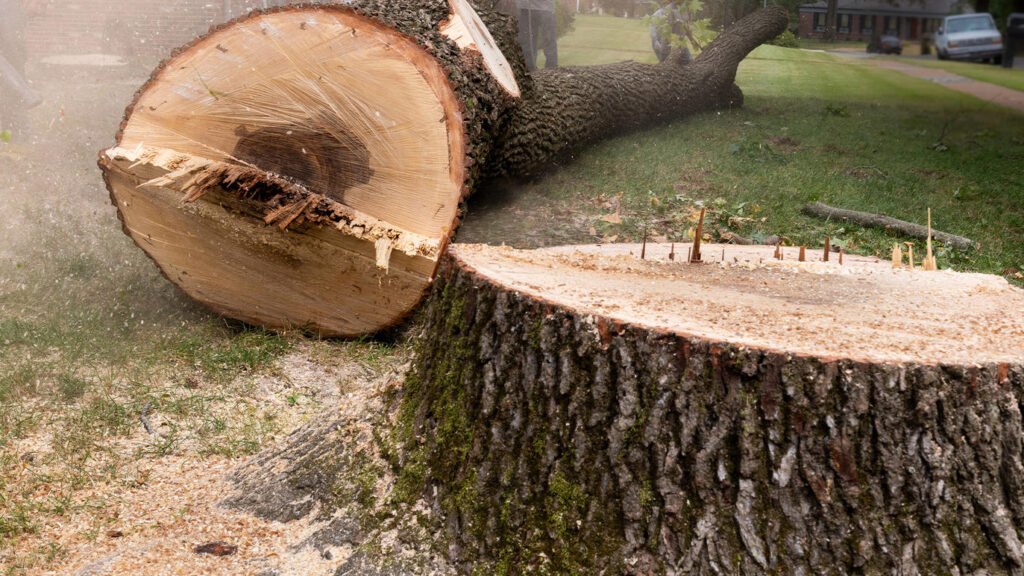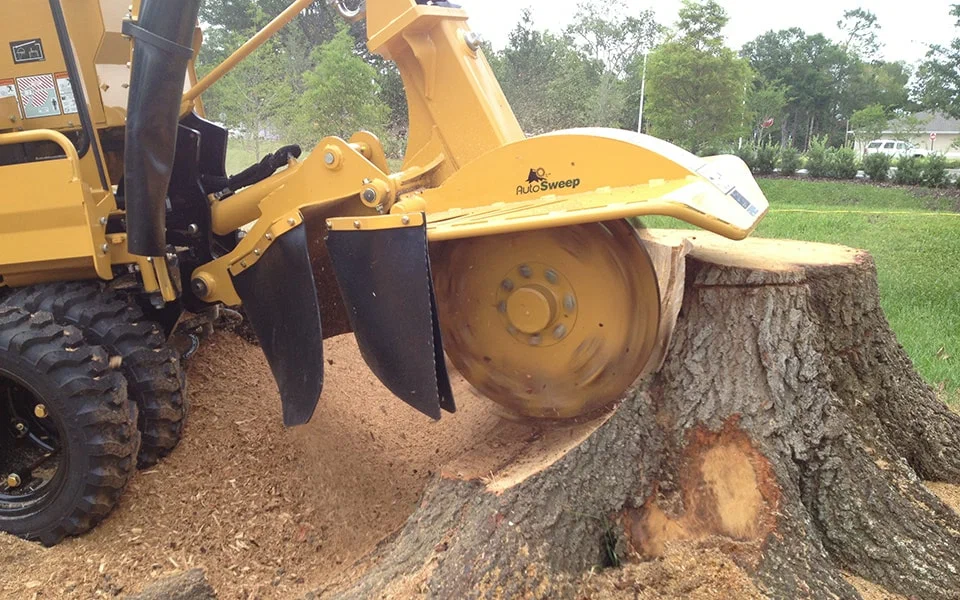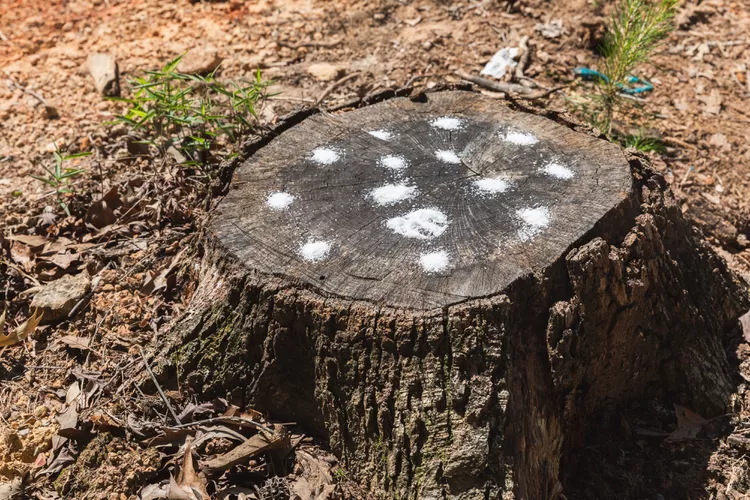Removing a tree trunk from your property can seem like a daunting task. Whether it’s an old stump in your garden or the remains of a recently felled tree, an unattended trunk can be both an eyesore and a hazard. If you’re in Blackpool and looking for the best way to deal with an unwanted tree trunk, this step-by-step guide has you covered.f
We’ll walk you through the easiest methods to remove a tree trunk, discuss common challenges, and help you decide if you should tackle it yourself or call in a professional. By the end of this guide, you’ll be ready to say goodbye to that trunk for good.
The Quick Answer for Removing a Tree Trunk
If you’re in a hurry to get rid of your tree trunk, here’s the direct solution. You have three main options depending on your situation, tools, and resources:
- Manual Removal – Best if the tree trunk is small or already rotting.
- Mechanical Removal with a Stump Grinder – Ideal for stubborn, larger tree trunks.
- Chemical Decomposition – Slow but low-effort; great for people who aren’t in a rush.
Now, let’s break each one down with step-by-step instructions to help you choose the right method.
Why Removing a Tree Trunk is Important
Leaving a tree trunk in your yard isn’t just about aesthetics; it can cause serious problems over time. For example:
- Pest Infestation: Decaying trunks attract insects like termites and ants.
- Obstacles or Injuries: Tree trunks can be tripping hazards, especially for kids or pets.
- Weed Growth: A tree trunk can serve as a breeding ground for weeds and invasive plants.
By removing it, you’ll create space for landscaping, reduce health risks, and improve your outdoor area’s visual appeal.
Step-by-Step Guide on How to Remove a Tree Trunk
The right removal method depends on the size and condition of the trunk of the tree. Here are the most effective ways to tackle it:
1. Manual Removal (For Smaller Tree Trunks)

This approach works well if you’re dealing with a small or rotting tree trunk.
What You’ll Need:
- A spade or shovel
- An axe or saw
- A crowbar
- Safety gear (gloves, goggles, steel-toe boots)
Steps to Follow:
- Dig Around the Trunk
Use a spade to dig a wide circle around the base of the tree trunk to expose the roots. - Cut Through the Roots
Chop away thick roots using an axe or saw. Focus on visible roots first, then dig deeper for any remaining ones. - Loosen and Pry
Once the roots are severed, insert a crowbar under the trunk to wiggle it loose. Try rocking the trunk until it comes free. - Dispose of the Trunk
Cut it into manageable pieces and dispose of it via a local garden waste scheme in Blackpool or use it for firewood.
Pro Tip: For stubborn tree trunks, you may need additional tools like a winch to pull it out.
2. Mechanical Removal with a Stump Grinder (For Medium to Large Tree Trunks)

When you’re dealing with a large, deep-rooted tree trunk, manual labor may not be enough. A stump grinder offers a quick, efficient solution.
What You’ll Need:
- Stump Grinder (available for hire in Blackpool)
- Safety Equipment
- Chainsaw (optional)
Steps to Follow:
- Clear the Area
Remove rocks, debris, and other obstacles around the trunk to avoid damaging the grinder. - Trim the Stump
Cut the trunk as close to the ground as possible using a chainsaw. - Grind the Trunk
Follow the grinder’s instructions to grind the trunk in layers, starting from one side and moving steadily across the surface until all remains are reduced to mulch. - Fill the Hole
Once the trunk is gone, you’ll be left with a hole in the ground. Fill it with soil for a level surface.
3. Chemical Removal (For Gradual Decomposition)

If you’re not in a rush, chemicals can break down the tree trunk naturally over time.
What You’ll Need:
- A drill
- Potassium Nitrate (also known as stump remover)
- Water
- Tarp
Steps to Follow:
- Drill Holes in the Trunk
Use a power drill to create holes across the surface of the trunk. Drill as deep as possible. - Add Stump Remover
Fill the holes with potassium nitrate and pour water into each one to activate the decomposition. - Cover the Stump
Place a tarp over the stump to seal moisture inside and speed up the process. - Wait and Remove
Within 4-6 weeks, the trunk will begin to rot. Use an axe or shovel to break it apart and remove it.
Note: Always adhere to local environmental regulations for chemical use in Blackpool.
Real-Life Story from Blackpool
George, a homeowner in Blackpool, struggled with a large tree trunk in his backyard for years. After trying DIY removal without success, he hired a professional stump grinding service. They completed the job in two hours, leaving George with a flat garden bed ready for landscaping. His takeaway? Sometimes, investing in expert help is worth every penny.
What to Consider When Removing Tree Trunks
Before removing a tree trunk, think about these factors:
- Cost: Hiring equipment or professionals can be pricey, but it may be faster and more reliable.
- Effort: Manual removal requires significant physical effort.
- Time: Chemical methods are slow but low-maintenance.
If you’re unsure which option suits you best, consult a local tree removal expert in Blackpool for guidance.
Final Thoughts and Next Steps
Removing a tree trunk doesn’t have to be overwhelming. Depending on your situation, you can choose from manual tools, machines, or chemicals for the job. Each method has its pros and cons, so consider your budget, physical capabilities, and timeline.
Now, it’s time to take the next step! If you’re ready to tackle this project, visit your local tool rental in Blackpool or contact a professional like Blackpool Tree Surgeon. For more helpful guides, tips, and solutions, keep exploring our blog. Your perfect yard is only a step away!


Comments are closed